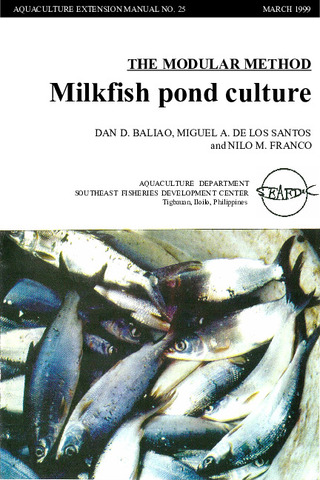Studies on the carbohydrates in the digestive tract of the milkfish Chanos chanos
- Global styles
- MLA
- Vancouver
- Elsevier - Harvard
- APA
- Help
Share
Abstract
Crude extracts from various regions of the digestive tract of pond grown milkfish were tested forttheir ability to catalyze the hydrolysis of various carbohydrates. The most active carbohydrases were those involved in the hydrolysis of agr-glucosidic bonds. Maltose, trehalose, dextrin, starch and glycogen were rapidly hydrolyzed in the presence of crude extracts from the intestines and the pyloric caeca. High amylase activity was observed in extracts from the intestines, pancreas, pyloric caeca and liver. The intestinal amylase had optimum activity at pH 6.2 and at a temperature of about 50°C. It was active at a chloride concentration of 10 to 40 ppt. The amylase activity in the intestines consistently peaked daily at about noon when the milkfish gut was full. In contrast, enzyme activity was significantly lower at 0030 hrs when the gut was empty. These results are consistent with earlier observations that the milkfish is a daytime feeder and suggest further that intestinal amylase secretion is in phase with the feeding activity of the milkfish. Although the fishes used in this study fed mostly on the naturally occurring algae in the ponds, no cellulase activity was detected in any region of the digestive tract. Less active carbohydrases that were detected include a beta-glucosidase and beta-galactosidase, both of which were of limited substrate specificity.
Description
SEAFDEC Contribution no. 71.
Suggested Citation
Chiu, Y. N., & Benitez, L. V. (1981). Studies on the carbohydrates in the digestive tract of the milkfish Chanos chanos. Marine Biology , 61(2), 247-254. https://doi.org/10.1007/BF00386667
Type
ArticleISSN
0025-3162Collections
- Journal Articles [1258]
Related items
Showing items related by title, author, creator and subject.
-
Series: Aquaculture extension manual; No. 25
The modular method: Milkfish pond culture
Baliao, Dan D.; de los Santos, Miguel A.; Franco, Nilo M. (Aquaculture Department, Southeast Asian Fisheries Development Center, 1999)The modular method of milkfish culture (Chanos chanos) described in the manual is an improvement over the traditional extensive method. The manual is intended for the use of fish farmers and aquaculturists, extensionists, ... -
Evaluation of organic and inorganic fertilizers in brackishwater milkfish ponds
Bombeo-Tuburan, Isidra; Agbayani, Renato F.; Subosa, Precilla F. (Elsevier, 1989)The study was conducted in twelve 144-m2 ponds to evaluate the effect of different organic and inorganic fertilizers on the growth, survival, gross production, and profitability of marketable milkfish. The ... -
Milkfish breeding and hatchery technology at SEAFDEC/AQD
Unknown author (Aquaculture Department, Southeast Asian Fisheries Development Center, 1999)Describes the techniques already adopted by the private sector: broodstock management, broodstock diet, commercial fry production, live transport, and larval diet. A list of AQD research publications on milkfish is included.






